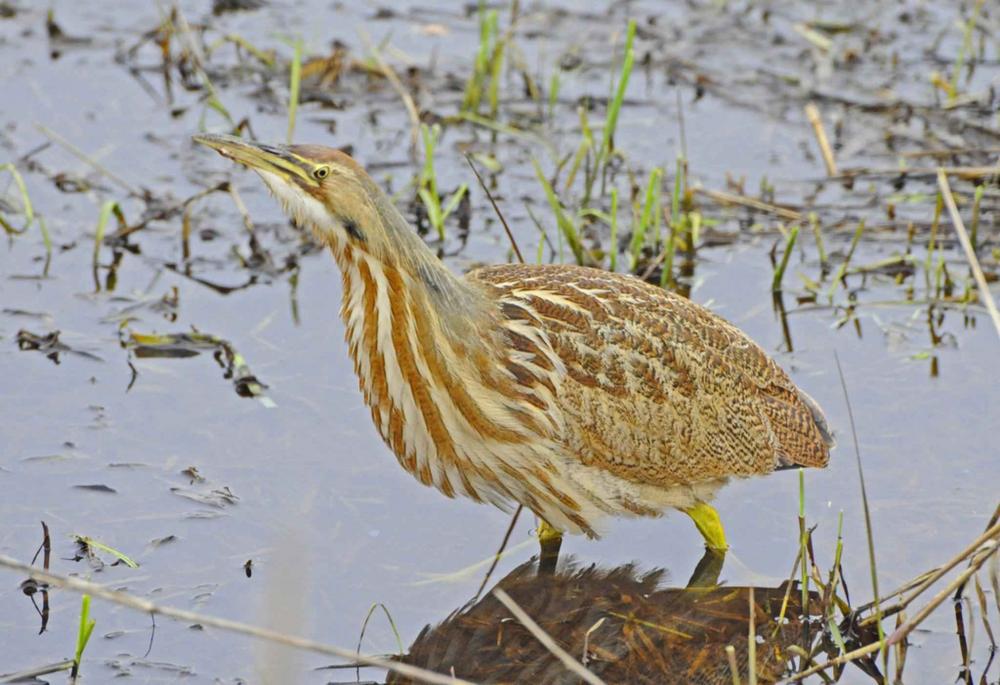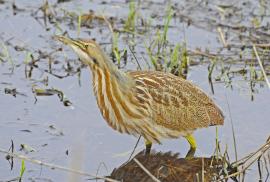Guide to Boreal Birds
Overview
The American Bittern has a remarkable, though rarely seen, courtship display. The male arches his back, exposing whitish plumes, shortens his neck, dips his breast forward, and "booms" at the female. Both members of the pair engage in a complicated aerial display flight. Bitterns spend most of their lives in concealment, stepping slowly and methodically through the reeds in search of food. When approached, it prefers to freeze and trust its concealing coloration rather than flush like other herons. When an observer is nearby, it will often stretch its neck up, point its bill skyward, and sway slowly from side to side, as if imitating waving reeds. If this doesn't fool the intruder, the bittern will fly off, uttering a low barking call.
Description
23-34" (58-86 cm). A secretive, medium-sized, streaked brown heron. Outer wing appears blackish brown in flight, contrasting with lighter brown of inner wing and body. At close range adults show long black stripe down side of throat. Young night-herons are similar but stockier, with shorter necks and more rounded wings without dark tips; they lack the secretive habits of bitterns.
Voice
On breeding grounds, a loud pumping sound, oong-KA-chunk! repeated a few times and often audible for half a mile. Flight call a low kok-kok-kok.
Nesting
2-6 buff or olive-buff eggs placed on a platform of reeds concealed in a marsh. Does not nest in colonies.
Habitat
Freshwater and brackish marshes and marshy lakeshores; regular in salt marshes during migration and winter.
Range/Migration
Breeds from southeastern Alaska, Manitoba, and Newfoundland south to California, New Mexico, Arkansas, and Carolinas. Winters from coastal British Columbia, Southwest, Illinois, and along Atlantic Coast to Long Island (occasionally farther north), and south to Costa Rica (rarely) and Greater Antilles.



